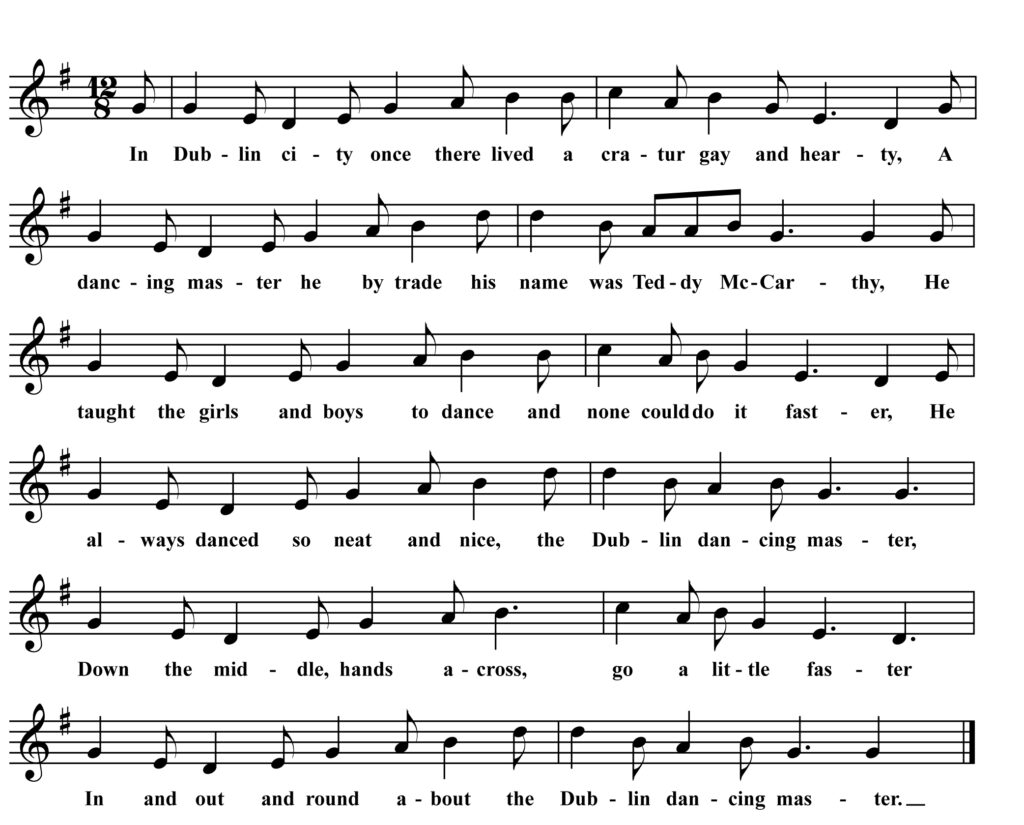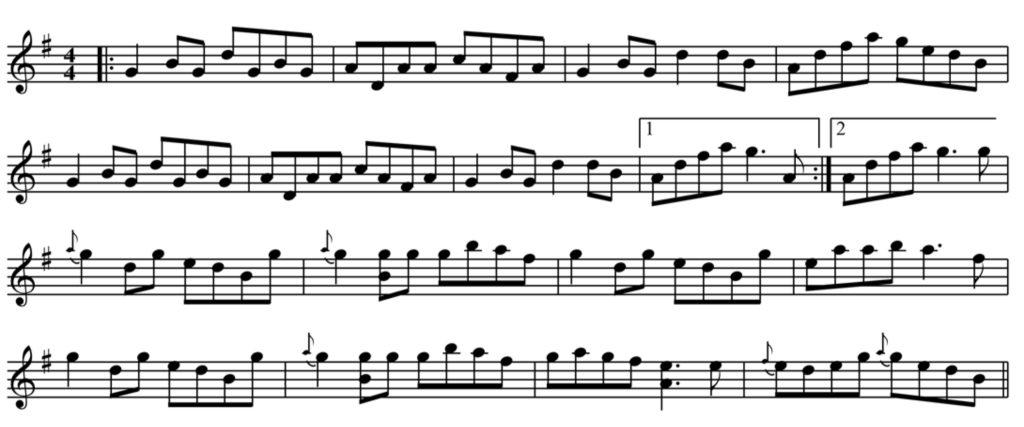The Dublin Dancing Master

In Dublin city once there lived a cratur gay and hearty,
A dancing master he by trade his name was Teddy McCarthy,
He taught the girls and boys to dance and none could do it faster,
He always danced so neat and nice, the Dublin dancing master.
Down the middle, hands across, go a little faster,
In and out and round about, the Dublin dancing master.
Now Teddy taught both reels and jigs and all the other dances,
From highland fling to plain quadrille to please the ladies’ fancies,
Patsy Whelan, Mickey Flynn and a boy called Kit McAstor,
Came to learn a highland fling from the Dublin dancing master
Thus Teddy got the boys and girls proficient in their dances,
Polkas, jigs and schottisches, mazurkas, reels and lancers,
No matter what the dance he taught, none could go it faster,
And none could dance an Irish jig like the Dublin dancing master.
I happened on this song in my monthly search and thought it was the perfect choice as I am thinking this week about the passing of Séamus O’Shea. Séamus was a true modern day Dublin dancing master whose son Cormac carries on the family tradition here in St. Paul. Rest in Peace Séamus.
The Canadian Maritimes are, again, my source for this music hall song that migrated from the vaudeville stage to the voices of singers in their communities. The song was sung at Tony Pastor’s famous New York theater in 1866 by singer William Carleton (not to be confused with the author of the same name). In Eastern Passage, Halifax County, Nova Scotia, it was sung by Ben Henneberry (with fiddle by Ken Faulkner) for Helen Creighton’s recording machine in 1948. You can hear the Henneberry/Faulkner recording at the Nova Scotia Archives site.
The melody above is my transcription of Henneberry’s singing and the text is adapted from Henneberry with additional words from a version printed in Will Carleton’s Dandy Pat Songster (1866).

